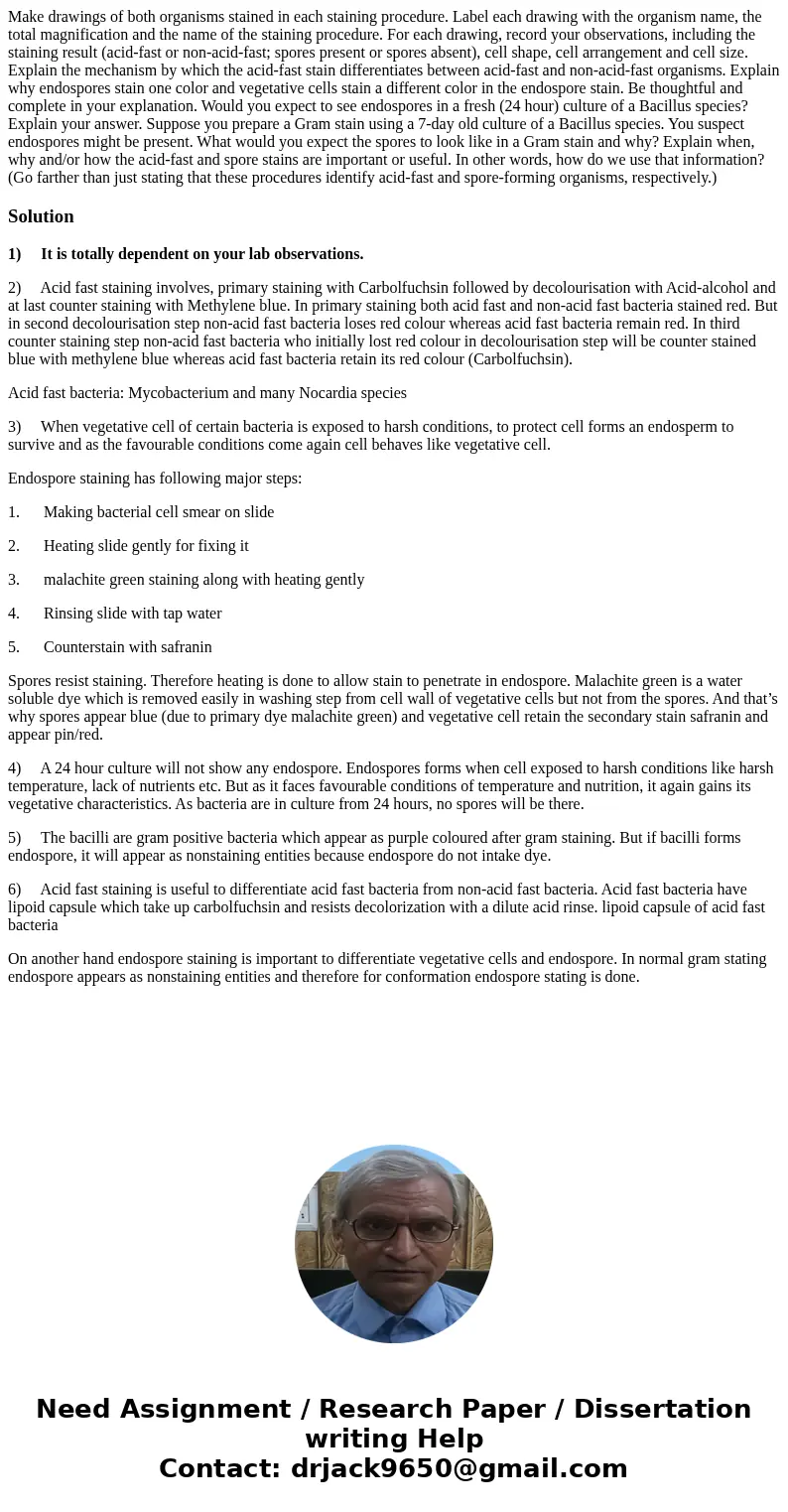Make drawings of both organisms stained in each staining pro
Solution
1) It is totally dependent on your lab observations.
2) Acid fast staining involves, primary staining with Carbolfuchsin followed by decolourisation with Acid-alcohol and at last counter staining with Methylene blue. In primary staining both acid fast and non-acid fast bacteria stained red. But in second decolourisation step non-acid fast bacteria loses red colour whereas acid fast bacteria remain red. In third counter staining step non-acid fast bacteria who initially lost red colour in decolourisation step will be counter stained blue with methylene blue whereas acid fast bacteria retain its red colour (Carbolfuchsin).
Acid fast bacteria: Mycobacterium and many Nocardia species
3) When vegetative cell of certain bacteria is exposed to harsh conditions, to protect cell forms an endosperm to survive and as the favourable conditions come again cell behaves like vegetative cell.
Endospore staining has following major steps:
1. Making bacterial cell smear on slide
2. Heating slide gently for fixing it
3. malachite green staining along with heating gently
4. Rinsing slide with tap water
5. Counterstain with safranin
Spores resist staining. Therefore heating is done to allow stain to penetrate in endospore. Malachite green is a water soluble dye which is removed easily in washing step from cell wall of vegetative cells but not from the spores. And that’s why spores appear blue (due to primary dye malachite green) and vegetative cell retain the secondary stain safranin and appear pin/red.
4) A 24 hour culture will not show any endospore. Endospores forms when cell exposed to harsh conditions like harsh temperature, lack of nutrients etc. But as it faces favourable conditions of temperature and nutrition, it again gains its vegetative characteristics. As bacteria are in culture from 24 hours, no spores will be there.
5) The bacilli are gram positive bacteria which appear as purple coloured after gram staining. But if bacilli forms endospore, it will appear as nonstaining entities because endospore do not intake dye.
6) Acid fast staining is useful to differentiate acid fast bacteria from non-acid fast bacteria. Acid fast bacteria have lipoid capsule which take up carbolfuchsin and resists decolorization with a dilute acid rinse. lipoid capsule of acid fast bacteria
On another hand endospore staining is important to differentiate vegetative cells and endospore. In normal gram stating endospore appears as nonstaining entities and therefore for conformation endospore stating is done.

 Homework Sourse
Homework Sourse